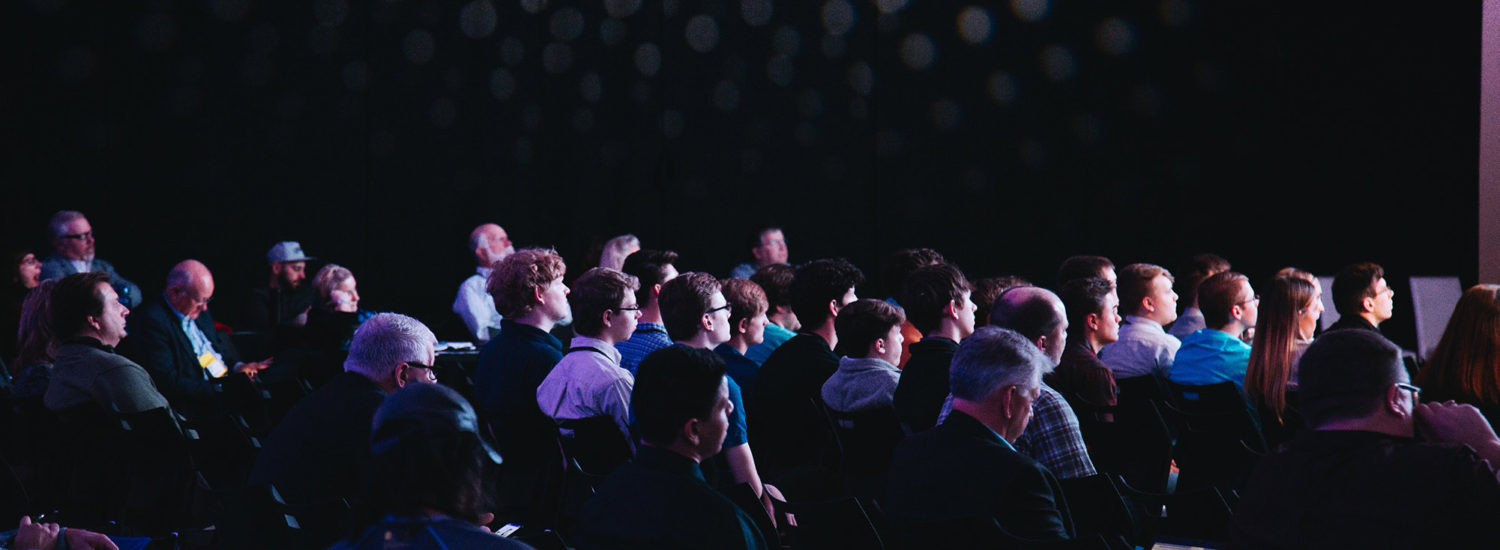brief n°03
Discover Policy Brief
n°03
Running more Effective International Conferences
This brief highlights effective and efficient ways of conducting international events which provide the evidence base for policy development. This is particularly relevant in the context of the global economic crisis and the reform agenda at UNESCO.
This brief draws upon the lessons learnt and the good practice demonstrated by “I know where I am Going” (IKWIG)1 – a conference on “remote access to World Heritage Sites, from St Kilda to Uluru” organised by the UK National Commission for UNESCO Scotland Committee, Proiseact Nan Ealan and other partners, and which took place in Edinburgh 23–24 November 2011. The full proceedings of this conference can be viewed here
Read Policy Brief
n°03
Table of Contents
01
Executive Summary
This brief highlights effective and efficient ways of conducting international events which provide the evidence base for policy development. This is particularly relevant in the context of the global economic crisis and the reform agenda at UNESCO.
This brief draws upon the lessons learnt and the good practice demonstrated by “I know where I am Going” (IKWIG)1 – a conference on “remote access to World Heritage Sites, from St Kilda to Uluru” organised by the UK National Commission for UNESCO Scotland Committee, Proiseact Nan Ealan and other partners, and which took place in Edinburgh 23–24 November 2011. The full proceedings of this conference can be viewed here.
1 The conference name will be abbreviated to IKWIG in this paper, for ease of use.

02
Background
The rationale for IKWIG was that at a time of economic crisis and environmental threat, countries have to address the dual challenge of protecting and preserving their natural and cultural heritage while maximising their economic value. This two-day international conference focused on the potential for new technologies (e.g. laser/3D/4D scanning, satellite mapping, GIS, underwater scanning) to create high-quality, remote-access visitor experiences for World Heritage Sites and other sites where remote access is preferable or necessary. The conference achieved three major aims:
→
To showcase some of the new technologies available worldwide and discuss their applications.
→
To debate policy issues linked to the benefits and the challenges which these new technologies present for remote access worldwide, in terms of visits, conservation, interpretation or for cultural tourism.
→
To encourage site managers globally – and particularly within the UNESCO World Heritage Sites community – to consider the benefits and impact those technologies could have for their own sites and allow them to investigate those further.
IKWIG attracted leading international speakers and was attended by 180 participants from over 20 countries. The conference differed from other more traditional events in that it was fully web-streamed and on the day attracted 2010 online participants from all over the world.

03
Current Situation
The transferrable lessons from IKWIG must be considered in the context of several key priorities of the UK Government and of UNESCO itself:
→
The recommendations for change set out in the UK Government’s Multilateral Aid Review (MAR) 2
→
The current economic crisis and budgetary constraints of UNESCO, and subsequent drive for efficiency and effectiveness; the implementation of the recommendations from the Independent External Evaluation of UNESCO (IEE)
→
UNESCO’s emerging policy framework for strategic partnerships 3
→
UNESCO’s ongoing review of its cooperation with its own National Commissions 4
Whilst the gathering of evidence and the sharing of information and good practice remain essential to global policy development, the modalities are changing. In the current climate it is becoming increasingly less justifiable for a large UN organisation such as UNESCO to organise conferences and events with large financial intputs and extensive carbon footprints, when new technologies offer ways of achieving similar goals in a cheaper and more accessible way. The transferrable lessons offered below demonstrate how this can be done, and argue for a paradigm shift towards “remote access”.
2 www.dfid.gov.uk/Documents/publications1/mar/unesco.pdf (accessed 11/05/12)
3 http://unesdoc.unesco.org/images/0021/002112/211285e.pdf (accessed 11/05/12)
4 http://unesdoc.unesco.org/images/0021/002151/215104e.pdf (accessed 11/05/12)

04
Options
Bottom-up partnerships for evidence-based policy development
One of the biggest learning outcomes from organisation of IKWIG is that such events can foster new and improved relationships between National Commissions and UNESCO, which address some of the concerns raised in the Review of the Cooperation of UNESCO’s Secretariat with the National Commissions for UNESCO (December 2011).
As Figure 1 demonstrates, the conference partners’ starting point was that of:
→
a central concept (remote access)
→
two key themes (new technologies and World Heritage Sites) relevant to UK practice and to the preoccupations of UNESCO’s World Heritage Centre (WHC) and network. It was important to also have a practical exemplar in the proposed St Kilda World Heritage Site (WHS) Centre.
In a spirit of mutual, clear, transparent, fair, accountable, and sustainable partnerships (187 EX/17 Part IV, p.3), the organisers met early on with the UNESCO World Heritage Centre (WHC) to share the concept of the conference, to ensure a fit with current global policy concerns and to seek support from UNESCO. This support and dialogue with the UNESCO WHC continued throughout the development of this conference and is ongoing in the legacy phase of the event.
Through its call for papers and its programming, IKWIG gathered thought leaders and current practitioners in the area of new technologies for remote access to heritage sites and in doing so provided evidence to UNESCO of the benefits and challenges of applying new technologies to remote access. UNESCO WHC staff engaged with the event and took part in the proceedings, helping to demonstrate how the practice related to current global concerns and policy. Those interventions are referenced in the conference guide, but particularly noteworthy are:
→
The keynote by Dr. Mechtild Rössler, Chief of the Policy and Statutory Meetings Section at the UNESCO World Heritage Centre, entitled “World Heritage and sustainable development – new visions through remote access” (Day 1, access on: http://vimeo.com/32699894)
An excerpt from the keynote reads:
“New technologies provide not only new opportunities for site management, protection and conservation; they can also enable new visions: by connecting disparate places and enable visitors and the general public to connect to remote areas. This is more and more important in particular with the emerging concept of serial transnational properties encouraged by the World Heritage Committee during the past years. Places spread across a continent or even transcontinental can be linked, their values better understood and sustainable development practices shared among people and nations.”
→
The concluding remarks by Peter DeBrine, UNESCO Programme Specialist in Sustainable Tourism, World Heritage Centre, entitled “Concluding remarks & policy directions” (Day 2, access on: http://vimeo.com/36915166)
An excerpt from the keynote reads:
“Cultural tourism presently accounts for 40 per cent of world tourism revenues. Cultural and natural heritage sites in general, and in particular, those inscribed on the UNESCO World Heritage List, generate substantial revenues and employment from tourism. The same applies to intangible cultural heritage, which sustains living cultural expressions and traditional know-how, as well as performing arts. Museums and other cultural institutions also significantly contribute to economic investments and benefits. Therefore, identifying tourism as a subsector for investment would encourage investment in infrastructure and stimulate local development.”
The evidence gathered by IKWIG in terms of remote access to World Heritage Sites is the subject of a further policy paper, but one of the most beneficial outcomes is the success of the partnership strengthening described above and that UNESCO intends to present the proceedings of this conference as an example of best practice at the global 40th anniversary celebration of the World Heritage Convention (Kyoto, 6–8 November 2012).
Effective Organisation: international events which work
The transferrable lessons from IKWIG can be summarised in four principles for organising international conferences which work.
a.
Choosing an innovative and current concept: from practice to policy
There are many different definitions of “remote access”. In its strictest sense – originating from the world of ICT – it can be defined as: “pertaining to communication with a data processing facility from a remote location or facility through a data link”; usually via a computer, a modem, a mobile, and some form of remote access software. These tools are what IKWIG referred to as “new technologies”. But in the case of this conference, the concept of “remote access” also referred to virtual access to a place or site which brings to the remote visitor an experience which feels as close to and as rich as a physical visit.
Focusing on this concept proved an innovative challenge because even though new technologies are continually evolving – and are indeed regularly being presented on specialist global platforms (e.g. SPAR, TED) the issue of remote access to World Heritage Sites via the use of new technologies had never been debated before in such a way, or at such an international level.
Furthermore, the concept of “remote access” became not only the key theme of IKWIG, but the driver for the organisation and delivery of the event, as the following sections demonstrate:
b.
Building partnerships for success in international events
Events of the size and reach of IKWIG require the building of local, regional and international partnerships, for the following key reasons:
1.
Financial: such events require large financial outputs. This two day conference was delivered with a budget of £65,000. It attracted key international speakers (from UNESCO WHC, CyArk, Nokia, Uluru WHS) as well as 180 policy makers, site managers and digital innovators from over 20 countries. IKWIG also attracted over 2000 online participants.
2.
Relevance: partners must be chosen carefully. In this case this was done through a steering group, using the main following criteria:
→
Whether the partner subscribed entirely to the aims and outcomes of the event
→
Whether the partner could bring added value to the event: not only in the form of financial backing, but also in the original delivery and marketing of the event
The ten local strategic partners and sponsors of IKWIG were: The UK National Commission for UNESCO (Scotland Committee), Proiseact Nan Ealan (Gaelic Arts Agency), the National Trust for Scotland, Historic Scotland, Creative Scotland, Comhairle nan Eilean Siar (Western Isles Council), Museums Galleries Scotland, New Media Scotland, Scotland‘s Islands, and the RSA Fellows’ Media, Creative Industries, Culture & Heritage Network.
3.
Leverage: partners bring with them communities and networks. IKWIG sponsors represented a large spectrum of the heritage field in Scotland and brought with them their extensive networks (regional, national and international). Some had strong links with the Scottish and UK Governments as well as with UNESCO directly. This became increasingly important as the project developed.
→
identify how the sector will use centres to contribute to its objectives, including capturing, utilising and disseminating centre outputs. National and regional-level bodies (i.e. National Commissions, IHP National Committees, etc.) should be included in these processes;
c.
Strong project management and capacity
1.
Project Management: Events such as IKWIG require solid project management, with a project manager as contact, co-ordinating activities and monitoring progress to delivery. The steering group of this conference hired a Project Manager part- time for the ten months leading to the event. The project manager was known to the partners and had a proven track record in organising large events. The core management was kept to a minimum to limit costs, whereas PR/marketing and technical support for the conference itself were outsourced. A number of the sponsors added their capacity to support the practical organisation of the event (venue, catering, entertainment, and providing a team of volunteers to assist on the two days of the conference). The main tools for project management were:
→
Regular partners meetings and e-communications between key contacts
→
Regular reporting including financial, marketing and progress reports
→
For the event: production schedule and briefings for speakers, volunteers and organising team
→
Task lists
→
Effective information management system
The overall cost of project management was £10K.
2.
Remote organisation: This conference was almost entirely organised by “remote access”. No hard-copy leaflet or promotional materials were produced. The marketing and publicity were done entirely by email and virally. The registration process took place online. All communications were via list email. This was seen as the most cost-effective solution for this type of event and in-line with the concept of the conference. The key elements of remote organisation were:
→
Electronic information and communication systems: a bespoke email was set up (Gmail) and a bespoke webpage was created on the New Media Scotland site. Throughout the year leading to the conference, several mass reminder emails were sent to potential participants about the event from the main Microsoft Excel list collated by the project manager (nearly 3000 individual contacts) and through the e-lists of each and every partner network (thousands more contacts). The event was also posted on the partners’ websites and on over 50 interested parties websites (e.g. UNESCO, ICOMOS, IUCN, ICCROM, BGS, etc.), and flagged in regular newsletters. For information management and file sharing, Dropbox (www.dropbox.com) and Google Documents were used.
→
Eventbrite (www.eventbrite.com) was selected as the online ticketing facility owing to its simplicity and low cost. With Eventbrite, communications with participants can be made via the site, participants list printed, payments followed, etc. Eventbrite took a minimal commission at source when each ticket was sold.
→
PR and Marketing: this was outsourced to Material Marketing (www.materialmc. co.uk) who handled the PR and press for the event (press releases, photo shots, etc.), according to a set marketing plan and by making full use of the partners’ marketing capabilities. They also produced the marketing e-flyer and the memory stick given to each participant at the event. They used exclusively viral marketing.
d.
Live-streaming for accessibility
IKWIG demonstrates that such international conferences are most effectively delivered via online web-streaming, to ensure maximum reach and accessibility worldwide. The lesson learnt here is that the web stream provider must be chosen carefully and that all technical details must be delegated to this provider. Beyongolia Productions (www.beyongolia.com) provided all the sound, audio, projection and live web streaming for IKWIG. They were chosen on the basis of their track record, professionalism and the value for money they represented.
The rationale for offering live streaming for IKWIG was twofold:
→
To ensure that the online participant would have a similar experience to that of the participant at the venue, save for face to face networking and entertainment opportunities.
→
To ensure more participation equity. At large UN events, the biggest proportion of participants are usually from the “North”. Delegates from the “South” are often chosen from government departments and may not represent the reality of on the ground practice. Web streaming offers scope for more equity in countries where there is effective internet access.
In practice this meant that during the conference online questions and comments were moderated and taken live in Q&A sessions. Perhaps the most striking example of “remote access” in this case was a filmed and live Q&A at the conference with the traditional owners of Uluru-Kata Tjuta National Park around “Living in a cultural landscape: issues of ownership and participation”. Figures include:
→
Number of webcast viewers over the two days of the conference: 2010
→
Number of people who watched the Vimeo videos between 29 November 2011 and 12 March 2012: 678 (ongoing)
→
Number of online comments and questions over the two days of IKWIG: 415
→
Top online occupancy (number of online viewers online at the same time): 40
→
Average online occupancy: 25 (est.)
Below are the results from the participants’ survey on the issue of the technology used for the conference (% of people in agreement with statement on the bottom of the chart). Forty four full surveys were received on Survey Monkey (22% of participants), as the survey was sent later than originally anticipated, but positive direct feedback was received during and after the event itself and by email. The feedback from participants demonstrated that the product delivered by Beyongolia fulfilled expectations and also provided a solid legacy for the event. It can be seen on: http://vimeo.com/mediascot.
e.
The bottom line: the cost-saving element
As was mentioned above the overall budget for the conference was £65K. The cost savings not only relate to the particular way the conference was organised, but also to the fact that the sponsors and partnership provided much in-kind support for it:
→
The marketing/PR costs were £3.5K because the hired company drew upon the partners’ respective marketing and communications departments. Estimated cost saving 50%.
→
The technical support cost was £4K. The company offered a special rate because of their existing business relationship with one of the partners. Estimated cost saving 30%.
→
The hired management cost was £10K only because the steering group chose a manager known and trusted to them, rather than an event management firm whose market rate fee would have been £20–25K. However it is estimated that over the 12 months leading to the event, the in-kind contribution from partners in terms of expert advice and input would have amounted – if on a paid consultancy basis – to £20K. Estimated cost saving 72%.
→
Although it is hard to estimate what it would have cost to bring the 2010 online participants to the UK for the conference, enlarged physical participation would have meant increased income but also a larger, more costly venue, increased catering costs, etc. This would have likely amounted to thousands more pounds spent. Such large events rarely make any profit and there would be little benefit (other than of face to face networking) to enlarged physical participation.
Managing and delivering IKWIG in the way it was represents an estimated overall saving of 50%, yet still offered the majority of the benefits such events can bring.
Summary points: benefits of innovative delivery for international events
a.
The benefits of IKWIG to the UK were:
→
Positioning itself as a world leader in an important emerging field
→
Playing a key role in an international network
→
Strengthening links and dialogue with the UNESCO World Heritage Centre
→
International promotion of UK World Heritage Sites and developments
→
Promoting UK innovation, enterprise and expertise to new markets
b.
The benefits of IKWIG to UNESCO were:
→
Partnership working with National Commissions and local partners to achieve UNESCO aims and goals
→
Diversified funding through partnership working and improved cost-effectiveness
→
New technologies and applications which enable UNESCO to do more, better, at less cost and to be more inclusive
→
Showcasing best practice case studies which can support the development of a Sustainable Tourism Strategy for World Heritage Sites and new developments in global policy
c.
The basic principles of innovative delivery:
The “How to” of successful, innovative and effective ways of conducting international events revolve around the following five basic principles:
→
From practice to policy: selecting themes/debates relevant to both practice and policy design.
→
Selective and enhancing partnerships: all of UNESCO’s partners from NGOs to National Commissions to large global businesses and governments have a role to play in policy development. International events can foster a bottom-up approach and add relevance to global policy.
→
Targeted and dedicated event management to drive efficiency and value for money.
→
Remote organisation and live-streaming for cost effectiveness, accessibility and to maximise participation.
→
Effective evaluation which builds upon the lessons learnt from each event and applies the lessons to other areas of work.

05
Recommendations
Continuing to deliver international events and meetings in the traditional way has substantial cost and carbon footprint implications. But innovative delivery demands a shift in behaviour and thinking for organisations such as UNESCO. In the current climate and given UNESCO’s reform agenda, delivering events in the manner described above has significant benefits. Learning from events such as IKWIG and opting to use the best that new technologies have to offer for appropriate events will save costs, maximise impact and help gather important evaluation data.
References
Acknowledgements
This policy brief was produced on behalf of the UK National Commission for UNESCO by Scotland Committee member Mr Malcolm Maclean of Proiseact Nan Ealan (the Gaelic Arts Agency) with Isabelle Uny of the UK National Commission for UNESCO Secretariat.
This policy brief is based on key transferable lessons from the conference Remote Access to World Heritage Sites – St Kilda to Uluru (Edinburgh, UK, November 2011), which was sponsored by the Gaelic Arts Agency, Historic Scotland, the National Trust for Scotland, Creative Scotland, Inspace, Museums Galleries Scotland, Scotland’s Islands, RSA Fellows’ Media, Creative Industries, Culture & Heritage Network, Comhairle nan Eilean Siar and the UK National Commission for UNESCO and its Scotland Committee.
The views contained in this policy brief are those of the UK National Commission for UNESCO and do not necessarily reflect those of the UK Government, its devolved administrations or the individuals or organisations which have contributed to this report or the remote access to World Heritage Sites conference sponsors.
? Browse #PolicyBriefs

Enhancing and Harmonising the Strategic Management of UNESCO’s Goodwill Ambassador Programme
AUGUST 2013
#PolicyBrief n°11

An evaluation of the Intergovernmental Oceanographic Commission’s role in global marine science and oceanography
FEBRUARY 2015
#PolicyBrief n°13
The UK National Commission for UNESCO’s Policy Advice
We work with world-leading experts to advise the UK and devolved governments on UNESCO-related issues and to shape UNESCO’s programmes
From analysing global education goals to practical steps to implement UNESCO’s Recommendations, our advice helps ensure UNESCO’s work is effective and UK governments can fulfil their commitments as members of UNESCO





